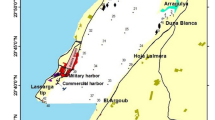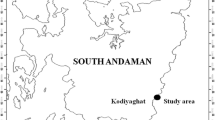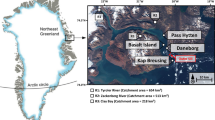Abstract
Associations of benthic invertebrates from Potter Cove (Antarctica) were defined from photo-transects. Density, percentage cover, species richness S′, diversity index H′, evenness index J′ and mean-size estimations were studied in relation to water depth down to 30 m. A clear bathymetric pattern was evident, with two different communities at 15 and 30 m, and a transition area between 20 and 25 m. At 15 m we observed a small number of taxa (nine in total), a high percentage of bare substratum (95%), and the dominant species were pennatulids and the bivalve Laternula elliptica. From 20 to 30 m the dominant species was the ascidian Molgula pedunculata and there was a slight increase in S′, H′ and J′, as well as in the mean size of individuals, especially in M. pedunculata, while the proportion of bare substratum showed a constant decrease with depth. Using multivariate analyses, three faunal assemblages related to depth were defined and a strong association of some species, mainly predators and opportunistic necrophages, with M. pedunculata was revealed. Ice impact (icebergs and anchor ice) seems to be the major regulating factor of benthic assemblages in shallow waters.
Similar content being viewed by others
Author information
Authors and Affiliations
Additional information
Received: 28 April 1997 / Accepted: 17 August 1997
Rights and permissions
About this article
Cite this article
Sahade, R., Tatián, M., Kowalke, J. et al. Benthic faunal associations on soft substrates at Potter Cove, King George Island, Antarctica. Polar Biol 19, 85–91 (1998). https://doi.org/10.1007/s003000050218
Issue Date:
DOI: https://doi.org/10.1007/s003000050218




